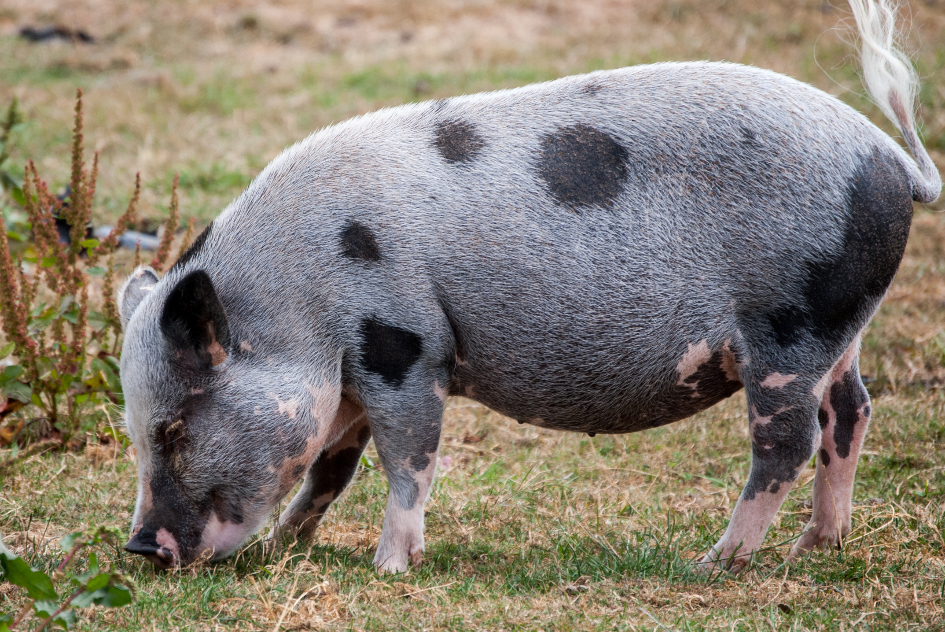



Australia prepares its pig health industry for ASF and other diseases
Dr David Williams briefs over a hundred vets and animal health industry representatives about the devastating effects of African swine fever at AAHL’s annual Emergency Animal Diseases SymposiumAfrican swine fever (ASF) is a deadly disease in pigs which has a devastating impact on all pig farmers in countries where the disease is present.
Thanks to our strong border protection systems and stringent biosecurity measures, this disease hasn’t crossed Australia’s borders. However, to maintain our good record, it remains vitally important to monitor global movement of emergency animal diseases and educate animal health workers to be on the lookout for unusual signs of disease.
Dr Williams presented the latest information about the recent spread of ASF into China, including the immediate concern about the possible spread of ASF to other countries in the Southeast Asian region.
The discovery of ASF in the remote Siberian city of Irkutsk in March 2017 foreshadowed the recent appearance of the disease in China, home to almost half of the world’s population of domestic pigs.

Training field veterinarians to recognise signs of emergency animal diseases builds our capacity for a rapid response to outbreaks. Credit: Cindy Shebley, CC BY 2.0
Dr Williams said these outbreaks in China are potentially disastrous for pig farming and pork production in a country that has the highest per capita consumption of pork in the world.
“To date there have been 36 outbreaks of ASF in China reported to the World Animal Health Organisation (OIE) by the China Animal Disease Control Centre and over 160,000 pigs have died or been culled as part of control efforts,” Dr Williams said.
“There is currently no vaccine available to prevent this disease and so animal health authorities now face a daunting task to control this disease, inspecting millions of pigs at farms, markets and abattoirs across China.”
ASF is caused by a virus infection that only affects wild or domestic pigs. It is not a human disease and human consumption of infected pork is harmless, but the effect on pig populations themselves is devastating.
In domestic pigs and wild boar, infection causes a skin rash, severe internal bleeding and the accumulation of fluid in the lungs. For most pigs, this is fatal. The virus itself is very hardy and can survive for months in chilled or frozen meat, cured hams or sausages, although cooking will inactivate the virus.
It can also survive for long periods in the environment in pig excretions, such as faeces or urine, and in blood, which can contain very high amounts of virus.
“Pigs can therefore become infected by eating contaminated food, direct contact with other infected pigs, or from contaminated soil or farm equipment,” Dr Williams said.
A major factor in the spread of the disease is human behaviour and activities. Illegal movement of pigs or pork products across borders by traders or foreign workers, improper disposal of food waste at entry ports, swill feeding, and the illegal sale of pigs from infected herds all contribute to the spread of ASF,” he said.
Of major concern now is the potential for the further spread of ASF throughout Southeast Asia, and the socio-economic consequences if this were to happen.
Further spread into the region seems inevitable, and the recent detection of ASF DNA in food brought into South Korea by a returning traveller from China highlights the risk to nearby countries.
Scientists at CSIRO’s Australian Animal Health Laboratory (AAHL) are watching disease movement closely and participating in regional activities, as all countries in the Southeast Asian region are now on high alert for ASF. For example, Dr Williams recently attended an emergency meeting convened by the UN’s Food and Agriculture Organisation (FAO) to address regional preparedness for ASF.
“The most urgent action needed now is for at risk countries to ensure they are prepared to deal with an incursion of ASF,” Dr Williams said.
“Key elements include the capacity to perform rapid field investigations and laboratory diagnosis for early detection of ASF. Underlying this is an effective veterinary service and a sound understanding of the pig farming and production, which may be complex and involve cross-border trade.
“There is no question that China and the region are facing a major threat to food biosecurity. The fight against ASF will be won through shared responsibility for implementing preventative measures, as well as open, collaborative and coordinated outbreak response, involving all affected or at risk countries,” he said.
For Australia, this is a timely reminder that maintaining our excellent biosecurity practices is of utmost importance to ensure we are fully prepared to swing into action should an emergency animal disease be detected.
As reported by CSIRO









